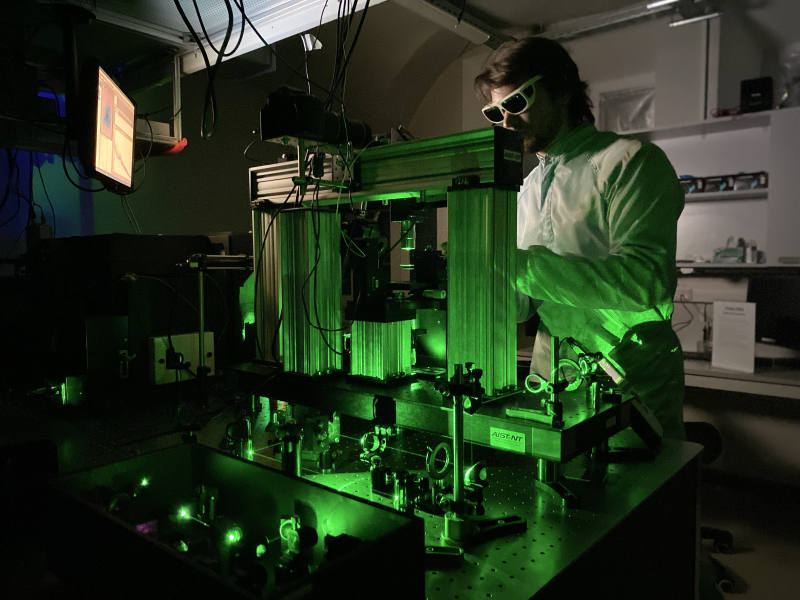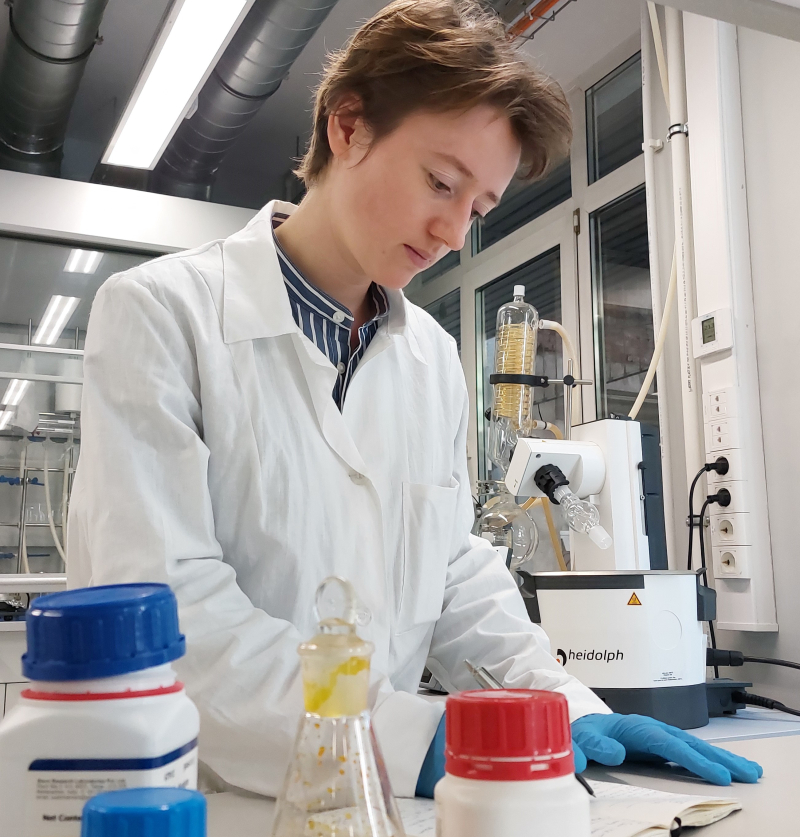Scientists at ITMO University have developed an artificial optical synapse using a natural inspired semiconductor, copper exide, also known as tenorite. When exposed to laser radiation, the mineral’s crystals start to behave as biological synapses in the brain; they respond differently to radiation based on the frequency of laser pulses, akin to synapses reacting to biologically active chemicals – neurotransmitters. The finding may open the way for next-gen processors that can imitate the function of biological neural networks; it can also accelerate AI calculations and training at lower energy costs. The results of the study were published in ACS Applied Materials & Interfaces.

Semyon Bachinin, the first author of the paper, conducting an experiment to investigate the optoelectronic response of copper exide. Photo courtesy of the subject
Modern neural networks are based on conventional electronic devices that have separate processor and memory functions, causing them to constantly transfer large amounts of data between the two components. This creates the bottleneck effect, which makes the device run slower, while consuming more energy. The solution may be a processor with the “features” of the brain’s neural networks. The reason is that synapses in biological networks can simultaneously store information and perform their functions, which significantly reduces their power consumption and enhances computing performance. This type of processor, however, cannot be produced using the materials and technologies currently on hand.
The researchers from ITMO University proposed new components for such processors; they managed to produce an artificial optical synapse by placing tenorite on gold contacts. The material exhibits a correlation between its properties and heating temperature, which is considered one of the criteria needed for observing neuromorphic behavior. The intensity of its electrical response to radiation depends on the frequency of the radiation; the more a crystal is exposed to radiation within a given time, the stronger its electrical response will be, and vice versa.
“The material’s response to an external stimulus is similar to the one synapses in our brain have towards neurotransmitters – biologically active chemicals that ensure data transfer between synapses. The intensity of their response is also dependent on the frequency of exposure to neurotransmitters. This feature is called plasticity – the ability of the brain to develop and change its behavior in response to a new experience. This study continues my previous works, which focused on the pursuit and design of new neuromorphic materials,” notes Semyon Bachinin, the first author of the paper and a junior researcher at ITMO’s Faculty of Physics.

Semyon Bachinin. Photo by Dmitry Grigoryev / ITMO NEWS
Computer processors based on these crystals will operate on principles similar to those of biological neural networks, and the training of AI algorithms will resemble the human learning process. Information will be processed and transferred not through traditional binary code, but by changing the intensity of the electrical response in artificial synapses. Furthermore, all computing operations will be run inside a single crystal, not different components as it is in conventional electronics. As a result, the new processor will take less time and energy to perform any function, which leads to more speedy and efficient AI training, as well as more rapid and energy-efficient coding, transmission and storage of data.
The scientists have already put their product into action. They used crystals as a platform for training a neural network to recognize handwritten numbers in photographs. After the third iteration, the AI demonstrated an accuracy of 95% – one of the record figures for modern-day neuromorphic materials. Additionally, the developers experimentally proved that crystals remain stable and do not collapse even after 13,000 cycles of laser exposure. The technology is also simple and eco-friendly; it is based on a natural and widespread semiconductor that can be artificially created at a laboratory without the need for any expensive equipment. Consequently, they can be employed for lean manufacturing of electronic devices on an industrial scale.

Maria Timofeeva, a co-author of the paper, modeling a chemical experiment to synthesize tenorite crystals. Photo courtesy of the subject
In the future, the physicists plan to create a network of several artificial synapses that will closely mimic the neural architecture of the human brain and study its behavior.
The project was conducted within the Priority 2030 program.
